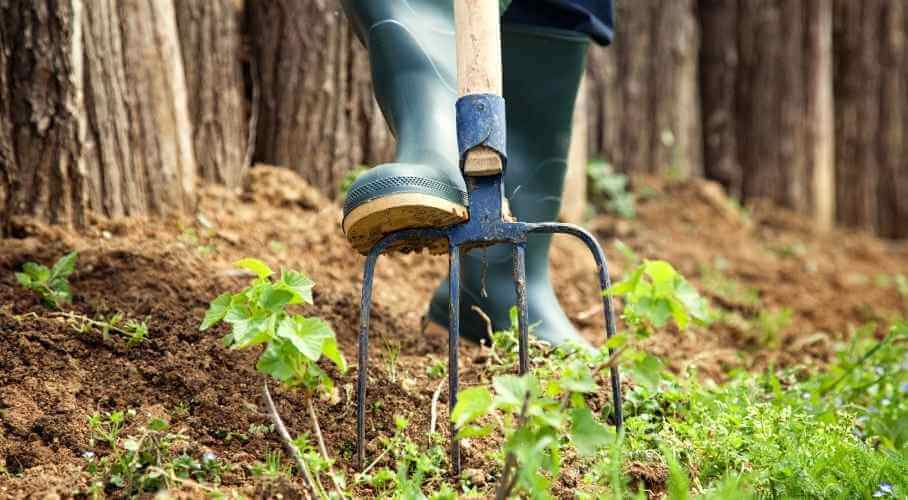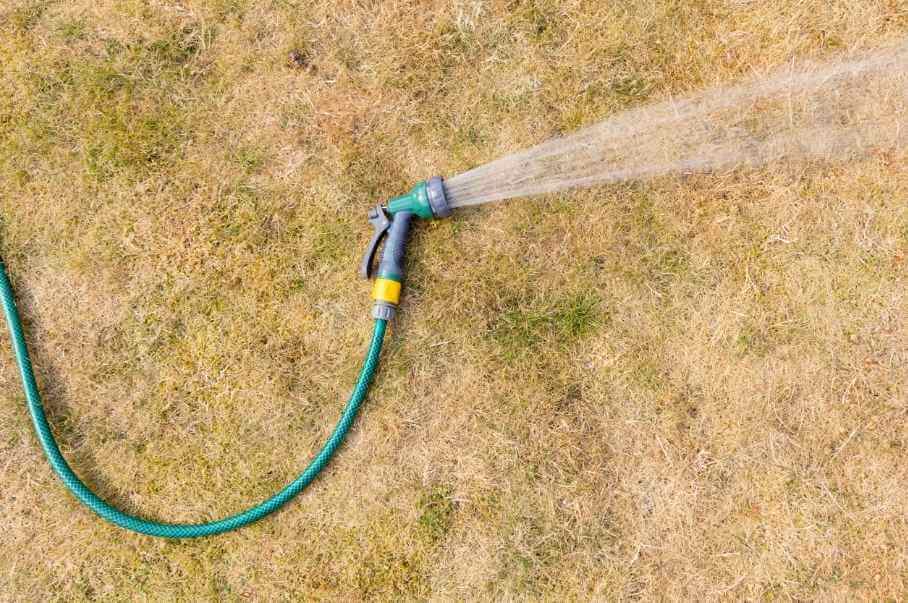
- Wed, Oct 2021
- |
- Moran’s Landscaping & Excavation LLC
Got a lawn that doesn’t look alive anymore? Don’t worry, since today we’ll show you some tips on how to fix a dead lawn. That way, you can be sure that you’ll bring your landscape back to life without a problem.
Having a dead lawn is disgusting in some way because your garden or yard loses its aesthetic appearance, and it would be difficult to raise healthy plants. So, keep reading to learn more about reviving your dead and dormant grass!
Learn How to Fix a Dead Lawn with These Easy Steps
Having multiple dead spots can sure be an awful sight for homeowners and even guests. Unfortunately, many things cause this sort of problem to arise. Some of the most common reasons behind brown grass include:
- Having the wrong turf type
- Extended heat and drought periods
- Fungal infections and infestations
- Neglecting lawn care
Before you lay down sod, you should know that there’s a way in which you can fix this issue! For this reason, we’ll show you some tips to keep in mind when embarking on this journey. As a result, you’ll end up with a thick green lawn with healthy roots.
These are the steps you should follow on how to fix a dead lawn:
- Choose the right seeds for your soil.
- Get rid of the dead patches and debris.
- Use a garden fork to loosen the soil.
- Scatter the seeds over the ground.
- Fertilize, mulch, and water the new seeds.
Choose the Right Seeds for Your Soil
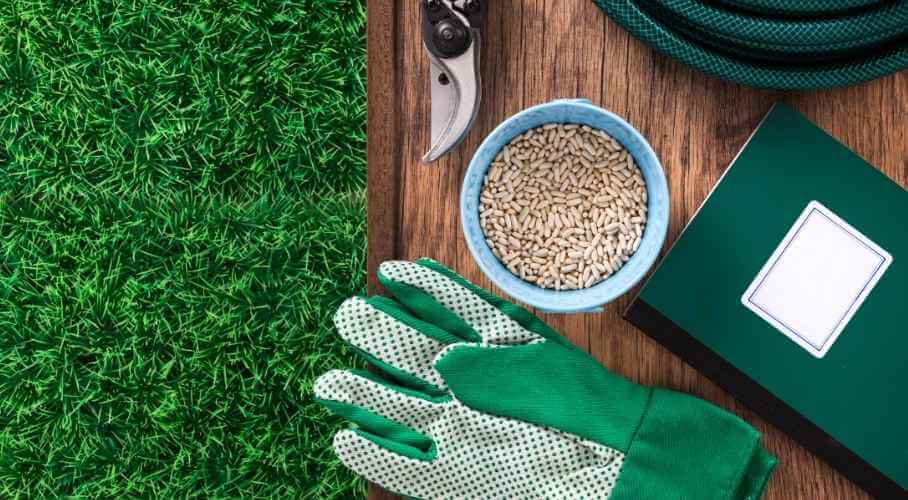
First and foremost, you must make sure to get the correct type of lawn for your place. As we said before, having the wrong kind of turf is often one of the main reasons you may have a brown lawn.
Depending on your area, you would want to choose a lawn that adjusts to your local climate. Moreover, keep in mind that some turfs stop growing and become brown during certain seasons due to their kind.
Do your research to know which type of grass plant works best for cool-season or warm-season grass.
Get Rid of the Dead Patches and Debris
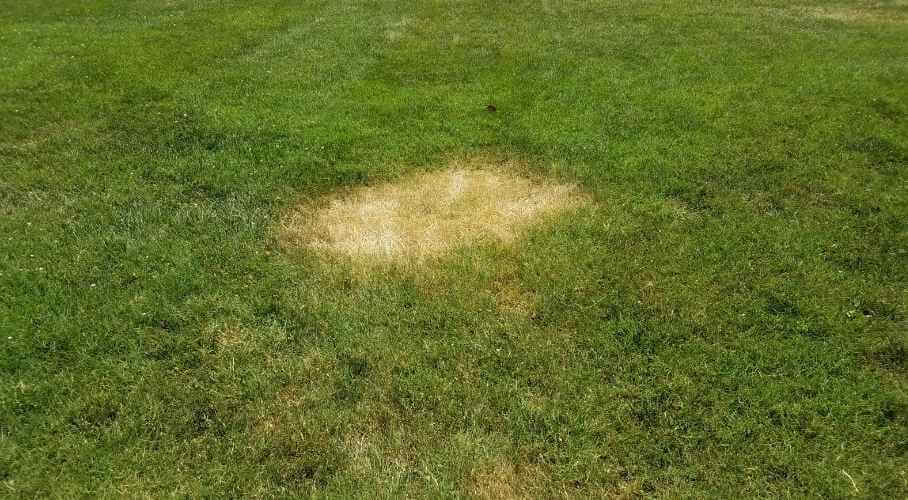
After knowing which lawn type works best for you, proceed to clear the dead grass and debris. By doing so, you’ll ensure that the new grass seeds thrive.
Dead spots can appear due to different reasons such as dog urine, animal digging, hot seasons, and these terrible factors little by little kill the lawn. Also, fungal diseases and grubs feed themselves from the grassroots occasioning patches where they attack.
The best way to get rid of dead patches and debris is by cleaning the area at first (this step includes checking if there are grubs). After cleaning the surface, you must sow high-quality grass seed to recover the spot. You will find these steps perfectly explained below.
You must be sure not to forget about fertilization to make the seed grow healthy. It is vital to respect the season. Sometimes, summer is not a good one to sow because of the heat level. As the last step, you must water the patches frequently and add mulch, which will improve the germination process.
Don’t overwater the soil because seeds could die.
Use a Garden Fork to Loosen the Soil
Aerating your lawn is vital for avoiding dead areas or drainage issues. Known as a broadfork too, it is one of the best tools to aerate your lawn. You’ll want to use a garden fork to loosen up the soil. When doing this step, be sure to till the soil’s surface between 2 and 3 inches.
Use this step also to ensure that the soil has efficient drainage to avoid having a soggy yard. Besides, this tool encourages strong root growth because it allows oxygen to enter the ground.
Moreover, aeration is a vital process to introduce the nutrients given by the fertilizers. Also, it helps to restore the dead lawn more naturally, and it can eradicate weed growth and seed drowning. The recommendable time for aeration is Spring because the soil is still moist.
Scatter the Seeds Over the Ground
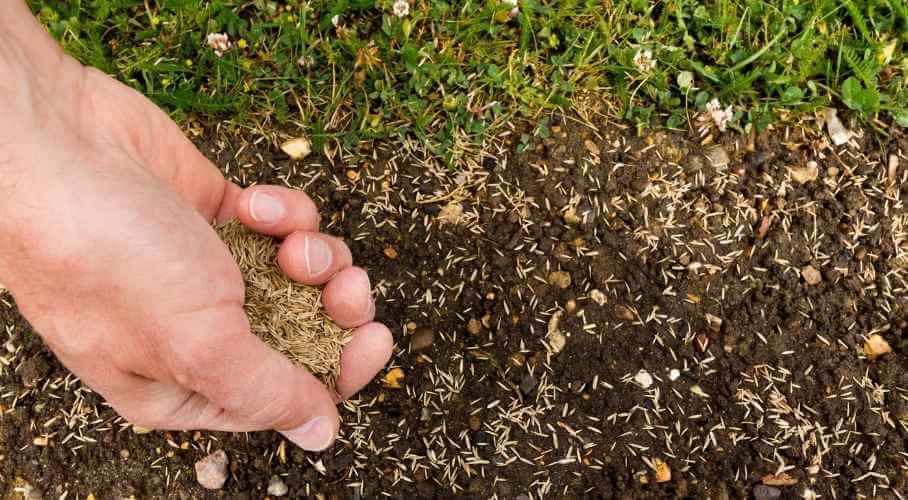
Once you finish tilling the soil, scatter the new seeds by incorporating them up to a quarter-inch into the ground. This step is crucial for recovering your dead lawn because seeds are spread in different directions.
This is more usual in big yards or patios, but seed dispersal is essential to keep the lawn in its best condition.
Fertilize, Mulch, and Water the New Seeds
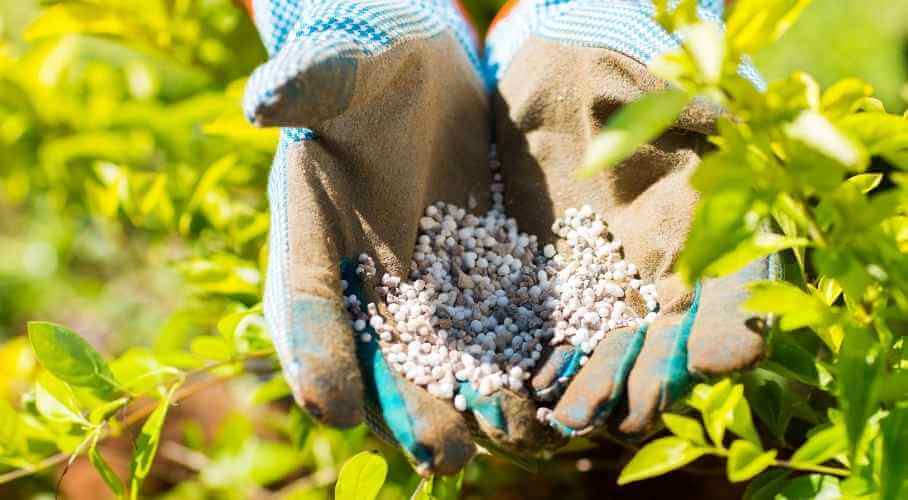
Finally, fertilize, mulch, and water your new lawn. Remember to water up to 1 inch of water to ensure a healthy lawn. Additionally, to avoid your grass turning brown, be sure to repeat this process regularly.
Fertilizing your lawn is vital for new seeds because it provides different nutrients that the soil can’t most of the time. If you want to encourage roots to grow fast and strong, it is essential not to avoid this step. So, if you fertilize at the right time, your lawn will have a second chance.
Some fertilizers are not recommended for some types of lawn, so you should receive guidance and advice from experts because you can burn your seeds. If you get the correct products, you will allow the presence of potassium, phosphorus, and nitrogen in your soil.
Mulch is another natural fertilizer that will keep the grass seed and existing plants in optimal condition. As you may know, mulch has grass clippings, compost, leaves, and other organic products that help to retain water and keep roots moist. Also, it is natural and won’t damage your lawn.
Get Assisted
Now that you know the proper steps on how to fix a dead lawn, you should now implement them! It’s vital to keep your lawn in optimal condition to avoid awful spots, fungal diseases, and infections that can spread to other green areas and damage them.
Remember that you can always count on the professional assistance of Moran’s Landscaping. Be sure to contact our team if you have any questions or if you need expert landscaping services.

